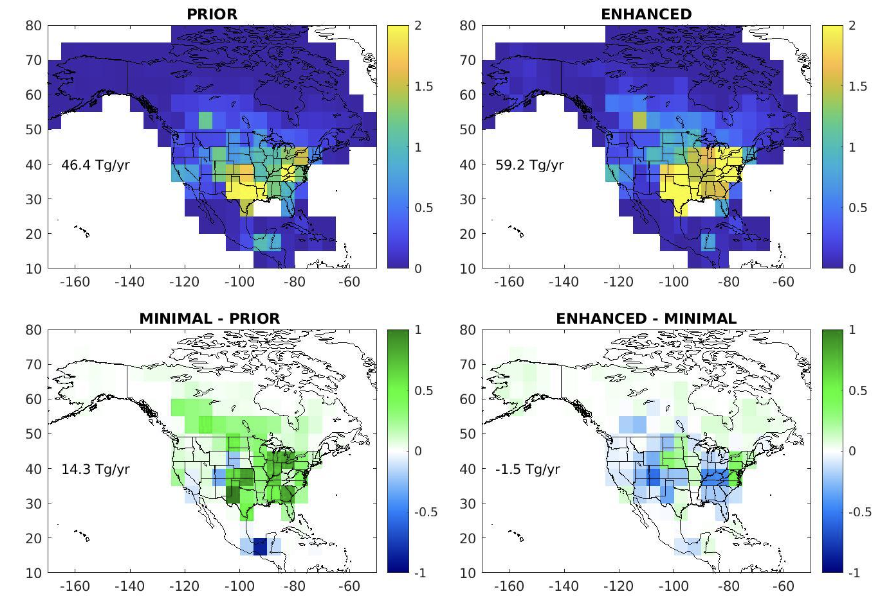Evaluation of the Impact of the Expanded in Situ Measurement Network on the Diagnosis of North American Methane Fluxes
N. Miles1, D. Wesloh1, Y. Cui1, S. Feng1, A. Andrews2, L. Hu2, K. Thonig2, S. Prinzivalli3, W. Callahan3, J. Marlow1 and K.J. Davis1,4
1The Pennsylvania State University, Department of Meteorology and Atmospheric Science, University Park, PA 16802; 814-880-8087, E-mail: nmiles@psu.edu
2NOAA Global Monitoring Laboratory (GML), Boulder, CO 80305
3Earth Networks, Inc., Germantown, MD 20876
4Earth and Environmental Systems Institute, The Pennsylvania State University, University Park, PA 16802
Accurate diagnosis of methane (CH4) emissions at regional scales is crucial in order to monitor progress towards emissions reductions attributable to policy changes. In this study, we use the regional inversion system CarbonTracker-Lagrange (CT-L) to diagnose North American methane emissions to evaluate the impact of the increasing density of the in-situ tower-based measurement network. We show results from an ensemble of six priors and four measurement networks, for seven regions within the North American domain. The posterior indicates an increase in emissions above the most realistic prior for six of the seven regions, with the most dramatic difference being in the central region of the U.S.. The differences in the regional totals using the different measurement networks are small (0.3-15.4% in magnitude, except for the western U.S. region), even starting from a spatially flat prior. Additional towers included in the inversion increase the error reduction slightly from 63% to 69% for the continental total. Using the most dense tower network available, the normalized standard deviation of the posteriors using multiple priors is reduced substantially for much of the U.S. (from 11% to 5% in the midwest, for example). We cross evaluate the inverse flux estimates using independent atmospheric CH4 mole fraction observations from the Atmospheric Carbon and Transport (ACT) - America Earth Venture Suborbital flight campaigns, finding that the enhanced network improves agreement in the northeast U.S., from a bias of 10.4 ppb for the minimal network to 3.8 ppb. We conclude that even a relatively sparse tower network is able to infer the large-scale patterns and net fluxes of methane from North America. Increased network density does increase the resolution of the inversion system and reduces biases, and thus is beneficial for understanding regional, seasonal-scale methane emissions.
Figure 1. Prior emissions, posterior emissions using the enhanced network, difference from the prior for the minimal network posterior, and difference between enhanced and minimal network posteriors. Units are Tg/yr/5°x5° pixel.

